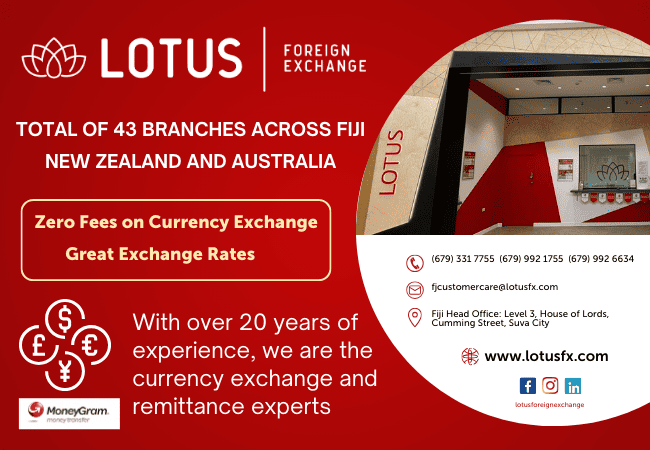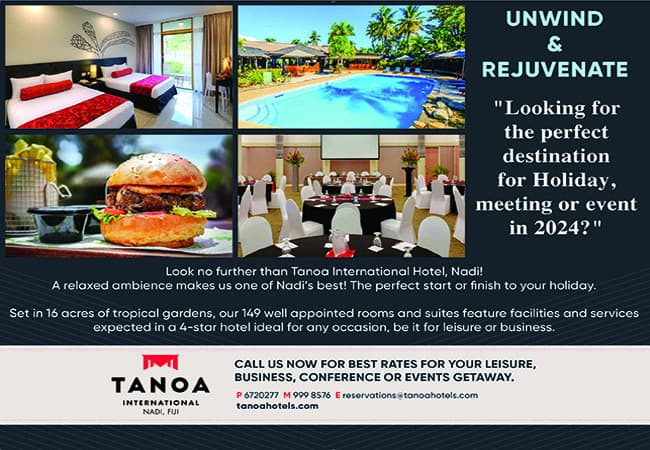By Kalinga Seneviratne
I arrived in Samoa for a recent long weekend not knowing what to expect. For a start, my flight from Nadi touched down at 1:00am at the Apia international airport. I was surprised to see the immigration officers and other airport staff looking fresh and the taxi stand outside was also a hive of activity – my fear of having to wait until day break to find a taxi to take me to the hotel 30 km away was unfounded. In fact, many international flights are scheduled to arrive in the wee hours of the morning, so the very early morning bustle is normal.
Geographically and culturally, this nation of just over 205,500 people is at the heart of Polynesia. It consists of two main islands Upolu and Savai’i. It has an ancient history, as Lapita people – believed to have originated in northern Philippines – settled here about 3500 years ago. The English missionaries who arrived in the islands in the 1830s have ensured that almost all Samoans converted to their faith and today 97% percent of the Samoans are Christians.
Something that immediately struck me was the sheer number of churches – from the grand Immaculate Conception Cathedral – with its ornate timber crafted ceilings, the dazzling stain-glassed windows and illustrated dome, to smaller cathedrals and churches across the island. Anywhere there is a community there is a church.
As I was in Samoa for only four days, I decided to stick to Upolu Island. The capital Apia is the country’s only city, as well as the main port and centre for services and trade; it contains approximately one-fifth of Samoa’s population. However the only beach is at the Taumeasina Island resort. So I decided to rent a car for three days, which is not costly (about US$70 a day plus petrol) and explore further afield.
The roads across Upolu are often bumpy two lane highways with a speed limit of 55 kmph but most drive at about 40 kmph anyway. The coastal roads are tar sealed and because of the island’s mountainous terrain, quite scenic. However the roads are not well sign posted, and on the first day, missing a turn towards the coastal road, I veered into the mountainous interior of the country where you experience a few potholes and dirt roads, but good green mountain terrain and valleys with very few communities.
There were many waterfalls on the way. One of the most scenic is Papapapaital Falls, just 30 minutes’ drive from Apia. It can be viewed from a lookout on the main highway to the south coast. Papapa cascades into a green gorge and is perhaps the most photographed site in Samoa. There are also many creeks with crystal clear waters, tempting you to take a dip and relieve the humidity.
On Saturday morning I was able to get a taste of Apia city life. The city’s famous colourful buses were plying the streets. Fitted from used truck chassis imported from overseas and adorned with creative custom paintings, the buses create an attractive sight on Upolu roads, and the central bus terminal must be one of the most colourful in the world.
Next door is the fish market, where fishers bring their catch each morning. The fish on display are as colourful as the buses next door, but you need to be up early to see this sight.
Apia’s famous Maketi Fou is primarily a produce market – with lots of yams, bananas and coconuts – almost anything was up for sale there – from firewood to colourful Pacific shirts and sulus (sarongs). This is the place to buy your souvenirs and local produce.
Most Samoans have lived in coastal villages since the country was first settled and a drive along the coastal road was scenic. Many small hotels line the highway, offering inexpensive accommodation or fales, which are simple wall-less or thatched coconut leaf-walled wooden huts with mattresses on the ground and shared washrooms.
Taufua Beach Fales near Lalomanu had a more upmarket version, with fales wooden walls and doors and attached washrooms for a little over US$100 a night. Perched on a beautiful shallow bay with vivid blue water, I was tempted to book in for the night, but I wanted to see more of the coastline and decided to drive on.
I almost regretted that decisions because the hotels, fales and villas that dotted the coastline past Lalomanu were all booked out for the weekend with tourists from New Zealand and Australia.
Two hours further along the coast I found a room at a luxury hotel by the sea. The last room available at ‘Return to Paradise’ was about US$300 a night. The hotel offered a buffet and an evening cultural show performed by the Maeve Band, an all-male group whose. Its members were gardeners at the resort before the pandemic, but during the lockdown pivoted to become performers, singing traditional Samoan songs – which had a touch of church choir singing – and many fast-moving gyrating dances to traditional drum beats.
Samoa is a safe destination, with very friendly people still steeped in tradition and an easy trip from Nadi.

